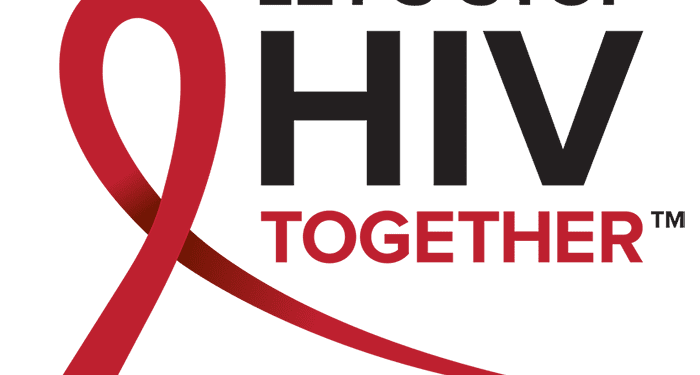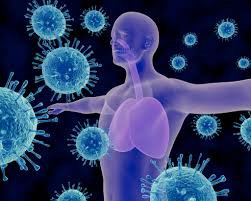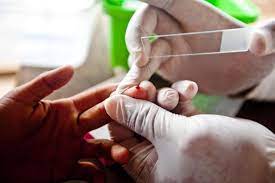What is HIV?
HIV is a virus that attacks the immune system. It can attack any part of the body, but is most commonly spread through sexual contact with an infected person. HIV can also be passed on to others through blood, breast milk, or other body fluids.
How is HIV spread?
HIV is most commonly spread through sexual contact with an infected person. However, it can also be spread through blood, breast milk, or other body fluids. The virus isn’t transferred in air or water, or through casual contact.
HIV is transmitted through bodily fluids that include:
- blood
- semen
- vaginal and rectal fluids
- breast milk
What are the symptoms of HIV?
The symptoms of HIV vary from person to person and depend on how severely the person’s immune system is compromised by HIV.
11 symptoms of HIV include:
- Muscle aches and joint pain
- Rash
- Sore throat and painful mouth sores
- Swollen lymph glands, mainly on the neck
- Diarrhea
- Weight loss
- Cough
- Night sweats
- Fever
- Sore throat
- Swollen lymph nodes
Can HIV be cured?
There is no cure for HIV, but treatment can help reduce the risk of transmitting the virus to others and improve the person’s health.
What are the risks of contracting HIV?
The risks of contracting HIV depend on a person’s immune system and viral load (the amount of virus in a person’s body). With treatment, many people living with HIV do not develop AIDS (a serious stage of the disease). However, there is always a risk that a person will develop AIDS if they are infected with HIV.
How do I know if I am infected with HIV?
To know for sure if you are infected with HIV, your doctor will perform a test called an ELISA test.
What is AIDS?
AIDS is a stage of HIV infection in which the immune system has been severely damaged. Without treatment, people with AIDS can die from opportunistic infections (infections that take advantage of weakened immune systems). Today, there is a number of treatments available that can prolong life and improve the quality of life for people living with AIDS.
HIV kills CD4 cells. Healthy adults generally have a CD4 count of 500 to 1,600 per cubic millimeter. A person with HIV whose CD4 count falls below 200 per cubic millimeter will be diagnosed with AIDS.
A person can also be diagnosed with AIDS if they have HIV and develop an opportunistic infection or cancer that’s rare in people who don’t have HIV.
An opportunistic infection such as Pneumocystis jiroveci pneumonia is one that only occurs in a severely immunocompromised person, such as someone with advanced HIV infection (AIDS).
Untreated, HIV can progress to AIDS within a decade. There’s currently no cure for AIDS, and without treatment, life expectancy after diagnosis is about 3 years.
his may be shorter if the person develops a severe opportunistic illness. However, treatment with antiretroviral drugs can prevent AIDS from developing.
If AIDS does develop, it means that the immune system is severely compromised, that is, weakened to the point where it can no longer successfully respond against most diseases and infections.
That makes the person living with AIDS vulnerable to a wide range of illnesses, including:
- pneumonia
- tuberculosis
- oral thrush, a fungal condition in the mouth or throat
- cytomegalovirus (CMV), a type of herpes virus
- cryptococcal meningitis, a fungal condition in the brain
- toxoplasmosis, a brain condition caused by a parasite
- cryptosporidiosis, a condition caused by an intestinal parasite
- cancer, including Kaposi sarcoma (KS) and lymphoma
These symptoms can be so mild that you might not even notice them. However, the amount of virus in your bloodstream (viral load) is quite high at this time. As a result, the infection spreads more easily during primary infection than during the next stage.
Clinical latent infection (Chronic HIV)
In this stage of infection, HIV is still present in the body and in white blood cells. However, many people may not have any symptoms or infections during this time.
This stage can last for many years if you’re receiving antiretroviral therapy (ART). Some people develop more severe disease much sooner.
Symptomatic HIV infection
As the virus continues to multiply and destroy your immune cells — the cells in your body that help fight off germs — you may develop mild infections or chronic signs and symptoms such as:
- Fever
- Fatigue
- Swollen lymph nodes — often one of the first signs of HIV infection
- Diarrhea
- Weight loss
- Oral yeast infection (thrush)
- Shingles (herpes zoster)
- Pneumonia
Progression to AIDS
Access to better antiviral treatments has dramatically decreased deaths from AIDS worldwide, even in resource-poor countries. Thanks to these life-saving treatments, most people with HIV in the U.S. today don’t develop AIDS. Untreated, HIV typically turns into AIDS in about 8 to 10 years.
When AIDS occurs, your immune system has been severely damaged. You’ll be more likely to develop diseases that wouldn’t usually cause illness in a person with a healthy immune system. These are called opportunistic infections or opportunistic cancers.
The signs and symptoms of some of these infections may include:
- Sweats
- Chills
- Recurring fever
- Chronic diarrhea
- Swollen lymph glands
- Persistent white spots or unusual lesions on your tongue or in your mouth
- Persistent, unexplained fatigue
- Weakness
- Weight loss
- Skin rashes or bumpsEarly symptoms of HIV
The first few weeks after someone contracts HIV is called the acute infection stage.
During this time, the virus reproduces rapidly. The person’s immune system responds by producing HIV antibodies, which are proteins that take measures to respond against infection.
During this stage, some people have no symptoms at first. However, many people experience symptoms in the first month or so after contracting the virus, but they often don’t realize HIV causes those symptoms.
This is because symptoms of the acute stage can be very similar to those of the flu or other seasonal viruses, such as:
- they may be mild to severe
- they may come and go
- they may last anywhere from a few days to several weeks
Early symptoms of HIV can include:
- fever
- chills
- swollen lymph nodes
- general aches and pains
- skin rash
- sore throat
- headache
- nausea
- upset stomach
Because these symptoms are similar to common illnesses like the flu, the person who has them might not think they need to see a healthcare provider.
And even if they do, their healthcare provider might suspect the flu or mononucleosis and might not even consider HIV.
Whether a person has symptoms or not, during this period their viral load is very high. The viral load is the amount of HIV found in the bloodstream.
A high viral load means that HIV can be easily transmitted to someone else during this time.
Initial HIV symptoms usually resolve within a few months as the person enters the chronic, or clinical latency, stage of HIV. This stage can last many years or even decades with treatment.
HIV symptoms can vary from person to person.
Learn more about the early symptoms of HIV.What are the symptoms of HIV?
After the first month or so, HIV enters the clinical latency stage. This stage can last from a few years to a few decades.
Some people don’t have any symptoms during this time, while others may have minimal or nonspecific symptoms. A nonspecific symptom is a symptom that doesn’t pertain to one specific disease or condition.
These nonspecific symptoms may include:
- headaches and other aches and pains
- swollen lymph nodes
- recurrent fevers
- night sweats
- fatigue
- nausea
- vomiting
- diarrhea
- weight loss
- skin rashes
- recurrent oral or vaginal yeast infections
- pneumonia
- shingles
As with the early stage, HIV is still transferable during this time even without symptoms and can be transmitted to another person.
However, a person won’t know they have HIV unless they get tested. If someone has these symptoms and thinks they may have been exposed to HIV, it’s important that they get tested.
HIV symptoms at this stage may come and go, or they may progress rapidly. This progression can be slowed substantially with treatment.
With the consistent use of this antiretroviral therapy, chronic HIV can last for decades and will likely not develop into AIDS, if treatment was started early enough.
Learn more about how HIV symptoms can progress over time.Is rash a symptom of HIV?
Many people with HIV experience changes to their skin. Rash is often one of the first symptoms of an HIV infection. Generally, an HIV rash appears as multiple small red lesions that are flat and raised.
Rash related to HIV
HIV makes someone more susceptible to skin problems because the virus destroys immune system cells that take measures against infection. Co-infections that can cause rash include:
The cause of the rash determines:
- how it looks
- how long it lasts
- how it can be treated depends on the cause
Rash related to medication
While rash can be caused by HIV co-infections, it can also be caused by medication. Some drugs used to treat HIV or other conditions can cause a rash.
This type of rash usually appears within a week or 2 weeks of starting a new medication. Sometimes the rash will clear up on its own. If it doesn’t, a change in medications may be needed.
Rash due to an allergic reaction to medication can be serious.
Other symptoms of an allergic reaction include:
- trouble breathing or swallowing
- dizziness
- fever
Stevens-Johnson syndrome (SJS) is a rare allergic reaction to HIV medication. Symptoms include fever and swelling of the face and tongue. A blistering rash, which can involve the skin and mucous membranes, appears and spreads quickly.
When 30 percentTrusted Source of the skin is affected, it’s called toxic epidermal necrolysis, which is a life threatening condition. If this develops, emergency medical care is needed.
While rash can be linked with HIV or HIV medications, it’s important to keep in mind that rashes are common and can have many other causes.
Learn more about HIV rash.HIV symptoms in men: Is there a difference?
Symptoms of HIV vary from person to person, but they’re similar in men and women. These symptoms can come and go or get progressively worse.
If a person has been exposed to HIV, they may also have been exposed to other sexually transmitted infections (STIs). These include:
Men, and those with a penis, may be more likely than women to notice symptoms of STIs such as sores on their genitals. However, men typically don’t seek medical care as often as women.
Learn more about HIV symptoms in men.
HIV symptoms in women: Is there a difference?
For the most part, symptoms of HIV are similar in men and women. However, symptoms they experience overall may differ based on the different risks men and women face if they have HIV.
Both men and women with HIV are at increased risk for STIs. However, women, and those with a vagina, may be less likely than men to notice small spots or other changes to their genitals.
In addition, women with HIV are at increased risk for:
- recurrent vaginal yeast infections
- other vaginal infections, including bacterial vaginosis
- pelvic inflammatory disease (PID)
- menstrual cycle changes
- human papillomavirus (HPV), which can cause genital warts and lead to cervical cancer
While not related to HIV symptoms, another risk for women with HIV is that the virus can be transmitted to a baby during pregnancy. However, antiretroviral therapy is considered safe during pregnancy.
Women who are treated with antiretroviral therapy are at very low risk for transmitting HIV to their baby during pregnancy and delivery. Breastfeeding is also affected in women with HIV. The virus can be transferred to a baby through breast milk.
In the United States and other settings where formula is accessible and safe, it’s recommended that women with HIV not breastfeed their babies. For these women, use of formula is encouraged.
Options besides formula include pasteurized banked human milk.
For women who may have been exposed to HIV, it’s important to know what symptoms to look for.
Learn more about HIV symptoms in women.What are the symptoms of AIDS?
AIDS refers to acquired immunodeficiency syndrome. With this condition, the immune system is weakened due to HIV that’s typically gone untreated for many years.
If HIV is found and treated early with antiretroviral therapy, a person will usually not develop AIDS.
People with HIV may develop AIDS if their HIV is not diagnosed until late or if they know they have HIV but don’t consistently take their antiretroviral therapy.
They may also develop AIDS if they have a type of HIV that’s resistant to (doesn’t respond to) the antiretroviral treatment.
Without proper and consistent treatment, people living with HIV can develop AIDS sooner. By that time, the immune system is quite damaged and has a harder time generating a response to infection and disease.
With the use of antiretroviral therapy, a person can maintain a chronic HIV diagnosis without developing AIDS for decades.
Symptoms of AIDS can include:
- recurrent fever
- chronic swollen lymph glands, especially of the armpits, neck, and groin
- chronic fatigue
- night sweats
- dark splotches under the skin or inside the mouth, nose, or eyelids
- sores, spots, or lesions of the mouth and tongue, genitals, or anus
- bumps, lesions, or rashes of the skin
- recurrent or chronic diarrhea
- rapid weight loss
- neurologic problems such as trouble concentrating, memory loss, and confusion
- anxiety and depression
Antiretroviral therapy controls the virus and usually prevents progression to AIDS. Other infections and complications of AIDS can also be treated. That treatment must be tailored to the individual needs of the person.HIV transmission facts
Anyone can contract HIV. The virus is transmitted in bodily fluids that include:
- blood
- semen
- vaginal and rectal fluids
- breast milk
Some of the ways HIV is transferred from person to person include:
- through vaginal or anal sex — the most common route of transmission
- by sharing needles, syringes, and other items for injection drug use
- by sharing tattoo equipment without sterilizing it between uses
- during pregnancy, labor, or delivery from a pregnant person to their baby
- during breastfeeding
- through “premastication,” or chewing a baby’s food before feeding it to them
- through exposure to the blood, semen, vaginal and rectal fluids, and breast milk of someone living with HIV, such as through a needle stick
The virus can also be transmitted through a blood transfusion or organ and tissue transplant. However, rigorous testing for HIV among blood, organ, and tissue donors ensures that this is very rare in the United States.
It’s theoretically possible, but considered extremely rare, for HIV to be transmitted through:
- oral sex (only if there are bleeding gums or open sores in the person’s mouth)
- being bitten by a person with HIV (only if the saliva is bloody or there are open sores in the person’s mouth)
- contact between broken skin, wounds, or mucous membranes and the blood of someone living with HIV
HIV does NOT transfer through:
- skin-to-skin contact
- hugging, shaking hands, or kissing
- air or water
- sharing food or drinks, including drinking fountains
- saliva, tears, or sweat (unless mixed with the blood of a person with HIV)
- sharing a toilet, towels, or bedding
- mosquitoes or other insects
It’s important to note that if a person living with HIV is being treated and has a persistently undetectable viral load, it’s virtually impossible to transmit the virus to another person.
Learn more about HIV transmission.Causes of HIV
HIV is a variation of a virus that can be transmitted to African chimpanzees. Scientists suspect the simian immunodeficiency virus (SIV) jumped from chimps to humans when people consumed chimpanzee meat containing the virus.
Once inside the human population, the virus mutated into what we now know as HIV. This likely occurred as long ago as the 1920s.
HIV spread from person to person throughout Africa over the course of several decades. Eventually, the virus migrated to other parts of the world. Scientists first discovered HIV in a human blood sample in 1959.
It’s thought that HIV has existed in the United States since the 1970s, but it didn’t start to hit public consciousness until the 1980s.
Learn more about the history of HIV and AIDS in the United States.Treatment options for HIV
Treatment should begin as soon as possible after a diagnosis of HIV, regardless of viral load.
The main treatment for HIV is antiretroviral therapy, a combination of daily medications that stop the virus from reproducing. This helps protect CD4 cells, keeping the immune system strong enough to take measures against disease.
Antiretroviral therapy helps keep HIV from progressing to AIDS. It also helps reduce the risk of transmitting HIV to others.
When treatment is effective, the viral load will be “undetectable.” The person still has HIV, but the virus is not visible in test results.
However, the virus is still in the body. And if that person stops taking antiretroviral therapy, the viral load will increase again, and the HIV can again start attacking CD4 cells.
Learn more about how HIV treatments work.HIV medications
Many antiretroviral therapy medications are approved to treat HIV. They work to prevent HIV from reproducing and destroying CD4 cells, which help the immune system generate a response to infection.
This helps reduce the risk of developing complications related to HIV, as well as transmitting the virus to others.
These antiretroviral medications are grouped into seven classes:
- nucleoside reverse transcriptase inhibitors (NRTIs)
- non-nucleoside reverse transcriptase inhibitors (NNRTIs)
- protease inhibitors
- fusion inhibitors
- CCR5 antagonists, also known as entry inhibitors
- integrase strand transfer inhibitors
- attachment inhibitors
Treatment regimens
The U.S. Department of Health and Human Services (HHS) generally recommends a starting regimen of three HIV medications from at least two of these drug classes.
This combination helps prevent HIV from forming resistance to medications. (Resistance means the drug no longer works to treat the virus.)
Many of the antiretroviral medications are combined with others so that a person with HIV typically takes only one or two pills a day.
A healthcare provider will help a person with HIV choose a regimen based on their overall health and personal circumstances.
These medications must be taken every day, exactly as prescribed. If they’re not taken appropriately, viral resistance can develop, and a new regimen may be needed.
Blood testing will help determine if the regimen is working to keep the viral load down and the CD4 count up. If an antiretroviral therapy regimen isn’t working, the person’s healthcare provider will switch them to a different regimen that’s more effective.
Side effects and costs
Side effects of antiretroviral therapy vary and may include nausea, headache, and dizziness. These symptoms are often temporary and disappear with time.
Serious side effects can include swelling of the mouth and tongue and liver or kidney damage. If side effects are severe, the medications can be adjusted.
Costs for antiretroviral therapy vary according to geographic location and type of insurance coverage. Some pharmaceutical companies have assistance programs to help lower the cost.
Learn more about the drugs used to treat HIV.HIV and AIDS: What’s the connection?
To develop AIDS, a person has to have contracted HIV. But having HIV doesn’t necessarily mean that someone will develop AIDS.
Cases of HIV progress through three stages:
- stage 1: acute stage, the first few weeks after transmission
- stage 2: clinical latency, or chronic stage
- stage 3: AIDS
As HIV lowers the CD4 cell count, the immune system weakens. A typical adult’s CD4 count is 500 to 1,500 per cubic millimeter. A person with a count below 200 is considered to have AIDS.
How quickly a case of HIV progresses through the chronic stage varies significantly from person to person. Without treatment, it can last up to a decade before advancing to AIDS. With treatment, it can last indefinitely.
There’s currently no cure for HIV, but it can be managed. People with HIV often have a near-normal lifespan with early treatment with antiretroviral therapy.
Along those same lines, there’s technically no cure for AIDS currently. However, treatment can increase a person’s CD4 count to the point where they’re considered to no longer have AIDS. (This point is a count of 200 or higher.)
Also, treatment can typically help manage opportunistic infections.
HIV and AIDS are related, but they’re not the same thing.
Learn more about the difference between HIV and AIDS.Causes of AIDS
AIDS is caused by HIV. A person can’t get AIDS if they haven’t contracted HIV.
Healthy individuals have a CD4 count of 500 to 1,500 per cubic millimeter. Without treatment, HIV continues to multiply and destroy CD4 cells. If a person’s CD4 count falls below 200, they have AIDS.
Also, if someone with HIV develops an opportunistic infection associated with HIV, they can still be diagnosed with AIDS, even if their CD4 count is above 200.What tests are used to diagnose HIV?
Several different tests can be used to diagnose HIV. Healthcare providers determine which test is best for each person.
Antibody/antigen tests
Antibody/antigen tests are the most commonly used tests. They can show positive results typically within 18–45 daysTrusted Source after someone initially contracts HIV.
These tests check the blood for antibodies and antigens. An antibody is a type of protein the body makes to respond to an infection. An antigen, on the other hand, is the part of the virus that activates the immune system.
Antibody tests
These tests check the blood solely for antibodies. Between 23 and 90 daysTrusted Source after transmission, most people will develop detectable HIV antibodies, which can be found in the blood or saliva.
These tests are done using blood tests or mouth swabs, and there’s no preparation necessary. Some tests provide results in 30 minutes or less and can be performed in a healthcare provider’s office or clinic.
Other antibody tests can be done at home:
- OraQuick HIV Test. An oral swab provides results in as little as 20 minutes.
- Home Access HIV-1 Test System. After the person pricks their finger, they send a blood sample to a licensed laboratory. They can remain anonymous and call for results the next business day.
If someone suspects they’ve been exposed to HIV but tested negative in a home test, they should repeat the test in 3 months. If they have a positive result, they should follow up with their healthcare provider to confirm.
Nucleic acid test (NAT)
This expensive test isn’t used for general screening. It’s for people who have early symptoms of HIV or have a known risk factor. This test doesn’t look for antibodies; it looks for the virus itself.
It takes from 5 to 21 days for HIV to be detectable in the blood. This test is usually accompanied or confirmed by an antibody test.
Today, it’s easier than ever to get tested for HIV.
Learn more about HIV home testing options.What’s the HIV window period?
As soon as someone contracts HIV, it starts to reproduce in their body. The person’s immune system reacts to the antigens (parts of the virus) by producing antibodies (cells that take countermeasures against the virus).
The time between exposure to HIV and when it becomes detectable in the blood is called the HIV window period. Most people develop detectable HIV antibodies within 23 to 90 days after transmission.
If a person takes an HIV test during the window period, it’s likely they’ll receive a negative result. However, they can still transmit the virus to others during this time.
If someone thinks they may have been exposed to HIV but tested negative during this time, they should repeat the test in a few months to confirm (the timing depends on the test used). And during that time, they need to use condoms or other barrier methods to prevent possibly spreading HIV.
Someone who tests negative during the window might benefit from post-exposure prophylaxis (PEP). This is medication taken after an exposure to prevent getting HIV.
PEP needs to be taken as soon as possible after the exposure; it should be taken no later than 72 hours after exposure but ideally before then.
Another way to prevent getting HIV is pre-exposure prophylaxis (PrEP). A combination of HIV drugs taken before potential exposure to HIV, PrEP can lower the risk of contracting or transmitting HIV when taken consistently.
Timing is important when testing for HIV.
Learn more about how timing affects HIV test results.HIV prevention
Although many researchers are working to develop one, there’s currently no vaccine available to prevent the transmission of HIV. However, taking certain steps can help prevent the transmission of HIV.
Safer sex
The most common way for HIV to be transferred is through anal or vaginal sex without a condom or other barrier method. This risk can’t be completely eliminated unless sex is avoided entirely, but the risk can be lowered considerably by taking a few precautions.
A person concerned about their risk for HIV should:
- Get tested for HIV. It’s important they learn their status and that of their partner.
- Get tested for other sexually transmitted infections (STIs). If they test positive for one, they should get it treated, because having an STI increases the risk of contracting HIV.
- Use condoms. They should learn the correct way to use condoms and use them every time they have sex, whether it’s through vaginal or anal intercourse. It’s important to keep in mind that pre-seminal fluids (which come out before male ejaculation) can contain HIV.
- Take their medications as directed if they have HIV. This lowers the risk of transmitting the virus to their sexual partner.
Other prevention methods
Other steps to help prevent the spread of HIV include:
- Avoid sharing needles or other paraphernalia. HIV is transmitted through blood and can be contracted by using materials that have come in contact with the blood of someone who has HIV.
- Consider PEP. A person who has been exposed to HIV should contact their healthcare provider about obtaining post-exposure prophylaxis (PEP). PEP can reduce the risk of contracting HIV. It consists of three antiretroviral medications given for 28 days. PEP should be started as soon as possible after exposure but before 36 to 72 hours have passed.
- Consider PrEP. A person has a higher chance of contracting HIV should talk to their healthcare provider about pre-exposure prophylaxis (PrEP). If taken consistently, it can lower the risk of acquiring HIV. PrEP is a combination of two drugs available in pill form.
Healthcare providers can offer more information on these and other ways to prevent the spread of HIV.
Check here for more information on STI prevention.Living with HIV: What to expect and tips for coping
More than 1.2 million people in the United States are living with HIV. It’s different for everybody, but with treatment, many can expect to live a long, productive life.
The most important thing is to start antiretroviral treatment as soon as possible. By taking medications exactly as prescribed, people living with HIV can keep their viral load low and their immune system strong.
It’s also important to follow up with a healthcare provider regularly.
Other ways people living with HIV can improve their health include:
- Make their health their top priority. Steps to help people living with HIV feel their best include:
- fueling their body with a well-balanced diet
- exercising regularly
- getting plenty of rest
- avoiding tobacco and other drugs
- reporting any new symptoms to their healthcare provider right away
- Focus on their mental health. They could consider seeing a licensed therapist who is experienced in treating people with HIV.
- Use safer sex practices. Talk to their sexual partner(s). Get tested for other STIs. And use condoms and other barrier methods every time they have vaginal or anal sex.
- Talk to their healthcare provider about PrEP and PEP. When used consistently by a person without HIV, pre-exposure prophylaxis (PrEP) and post-exposure prophylaxis (PEP) can lower the chances of transmission. PrEP is most often recommended for people without HIV in relationships with people with HIV, but it can be used in other situations as well. Online sources for finding a PrEP provider include PrEP Locator and PleasePrEPMe.
- Surround themselves with loved ones. When first telling people about their diagnosis, they can start slow by telling someone who can maintain their confidence. They may want to choose someone who won’t judge them and who will support them in caring for their health.
- Get support. They can join an HIV support group, either in person or online, so they can meet with others who face the same concerns they have. Their healthcare provider can also steer them toward a variety of resources in their area.
There are many ways to get the most out of life when living with HIV.
Hear some real stories of people living with HIV.HIV life expectancy: Know the facts
In the 1990s, a 20-year-old person with HIV had a 19-year life expectancyTrusted Source. By 2011, a 20-year-old person with HIV could expect to live another 53 years.
It’s a dramatic improvement, due in large part to antiretroviral therapy. With proper treatment, many people with HIV can expect a normal or near- normal lifespan.
Of course, many things affect life expectancy for a person with HIV. Among them are:
- CD4 cell count
- viral load
- serious HIV-related illnesses, including hepatitis
- misusing drugs
- smoking
- access, adherence, and response to treatment
- other health conditions
- age
Where a person lives also matters. People in the United States and other developed countries may be more likely to have access to antiretroviral therapy.
Consistent use of these drugs helps prevent HIV from progressing to AIDS. When HIV advances to AIDS, life expectancy without treatment is about 3 yearsTrusted Source.
In 2017, about 20.9 million peopleTrusted Source living with HIV were using antiretroviral therapy.
Life expectancy statistics are just general guidelines. People living with HIV should talk to their healthcare provider to learn more about what they can expect.
Learn more about life expectancy and long-term outlook with HIV.Is there a vaccine for HIV?
Currently, there are no vaccines to prevent or treat HIV. Research and testing on experimental vaccines are ongoing, but none are close to being approved for general use.
HIV is a complicated virus. It mutates (changes) rapidly and is often able to fend off immune system responses. Only a small number of people who have HIV develop broadly neutralizing antibodies, the kind of antibodies that can respond to a range of HIV strains.
The first HIV vaccine efficacy study in 7 years was underway in South Africa in 2016. The experimental vaccine is an updated version of one used in a 2009 trial that took place in Thailand.
A 3.5-year follow-up after vaccination showed the vaccine was 31.2 percent effective in preventing HIV transmission.
The study involves 5,400 men and women from South Africa. In 2016 in South Africa, about 270,000 peopleTrusted Source contracted HIV. The results of the study are expected in 2021.
Other late-stage, multinational vaccine clinical trials are also currently underway.
Other research into an HIV vaccine is also ongoing.
While there’s still no vaccine to prevent HIV, people with HIV can benefit from other vaccines to prevent HIV-related illnesses. Here are the CDC recommendations:
- pneumonia: recommendedTrusted Source for all children younger than 2 and all adults 65 and older
- influenza: recommendedTrusted Source for all people over 6 months old annually with rare exceptions
- hepatitis A and B: ask your doctor if you should get vaccinated for hepatitis A and B, especially if you are in a higher risk groupTrusted Source
- meningitis: the meningococcal conjugate vaccination is recommendedTrusted Source for all preteens and teens at 11 to 12 years old with a booster dose at 16, or anyone at risk. The serogroup B meningococcal vaccination is recommended for anyone 10 years or older with increased risk.
- shingles: recommendedTrusted Source for those ages 50 or older
why is an HIV vaccine is so difficult to develop.
1: HIV is constantly mutating, making it difficult to develop a vaccine that will be effective against all strains.
2: HIV is able to hide from the immune system, making it hard for the body to recognize and fight the virus.
3: The virus can cause a wide range of symptoms, which makes it difficult to identify and diagnose.
4: There is no single strain of HIV, so a vaccine must be developed that will work against multiple strains.
5: Some people may have an adverse reaction to the vaccine, making it difficult to ensure its safety.
6: HIV vaccines must be able to induce an immune response that is both long-lasting and effective against the virus.
When to see a doctor for HIV/AIDS test?
If you think you may have been infected with HIV or are at risk of contracting the virus, see a health care provider as soon as possible.
If you think you may have been infected with HIV, it is important to seek medical help as soon as possible. Seeing a health care provider is the best way to find out if you are infected and to get the medical treatment and support necessary to manage the virus. Additionally, learning more about HIV and AIDS can help you better understand your risks and how to protect yourself and others. Fortunately, there are many resources available online that provide reliable information on HIV and AIDS.






























